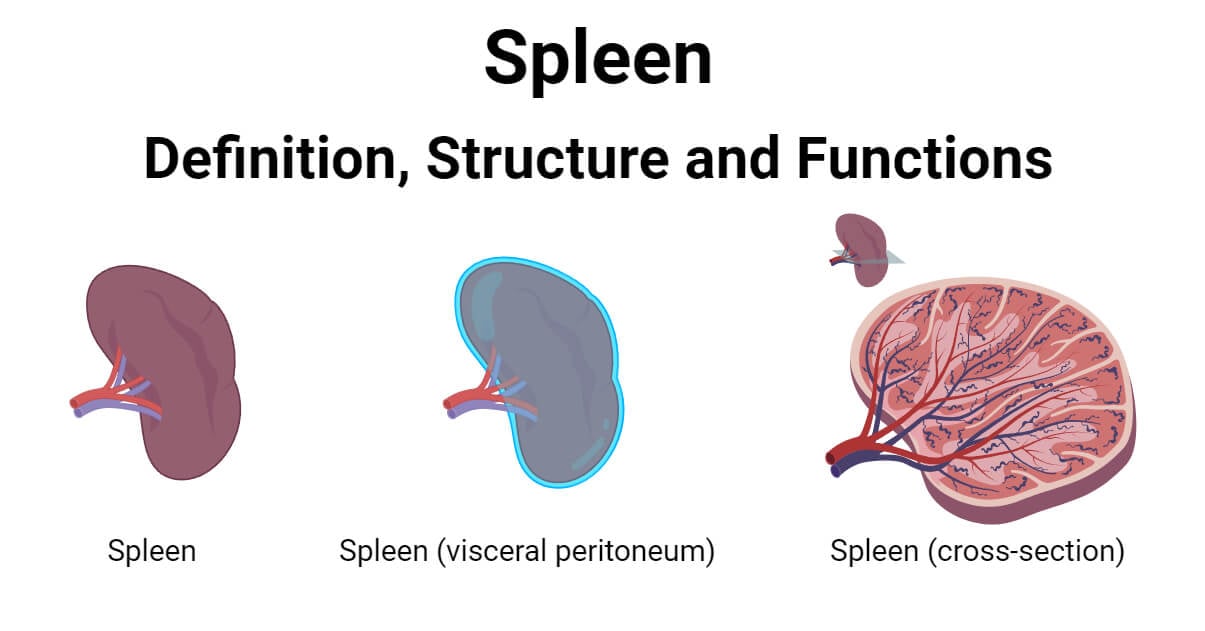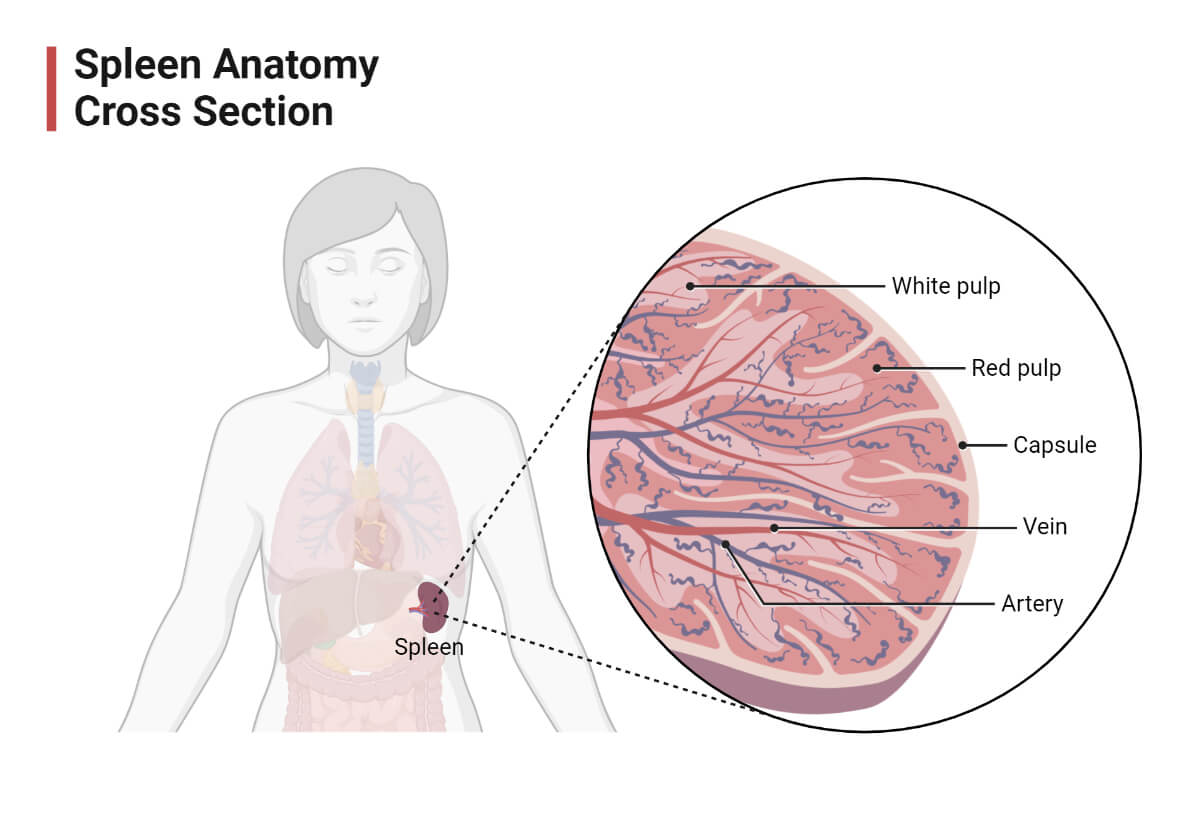The spleen is a large, encapsulated, bean-shaped organ that is situated on the left side of the body below the diaphragm. The spleen contains T and B lymphocytes as well as many phagocytes and is a major component of the mononuclear phagocyte system. Although the structure resembles that of the large lymph nodes, the spleen differs from a lymph node in having no lymphatic drainage, and also in containing large numbers of red cells.

Interesting Science Videos
Structure of Spleen
- It is a dark purple-coloured organ, which lies in the left hypochondriae region of the abdomen, between the fundus of the stomach and the diaphragm.
- It varies in size and weight during the lifetime of an individual but in an adult is usually about 12 cm long, 8cm broad and 3-4 cm thick weighing about 200gm.
- The spleen has diaphragmatic and visceral surfaces. The diaphragmatic surface is in contact with the inner surface of the diaphragm.
- The spleen has an outer coat of peritoneum which is firmly adherent to the internal fibro-elastic coat or splenic capsule that dips into the organ, forming trabeculae.

- The spleen has a spongy interior called splenic pulp. The splenic pulps are of two kinds:
- White Pulp:
- It consists of periarteriolar sheaths of lymphatic tissue with enlargements called splenic lymphatic follicles containing rounded masses of lymphocytes.
- These follicles are center of lymphocytes production called primary lymphoid follicles, composed mainly of follicular dendritic cells (FDC) and B cells.
- They are visible to the naked eye in freshly cut surface of the spleen as whitish dots against the dark red background of red pulp.
- The white pulp forms ‘islands’ within a meshwork of reticular fibers containing red blood cells, macrophages and plasma cells (red pulp).
- Red Pulp:
- It consists of numerous sinusoids containing blood, separated by a network of perivascular tissue which is referred to as the splenic cords.
- The splenic cords contain numerous microphages abd are the site of intense phagocytes activity.
- They also contain numerous lymphocytes, which are derived from the white pulp.
Functions of Spleen
- The main immunological function of the spleen is to filter the blood by trapping bloodborne microbes and producing an immune response to them. It is particularly important for B cell responses to polysaccharide antigens.
- The spleen is formed partly by lymphatic tissue which produces T lymphocytes and B lymphocytes.
- Due to the presence of lymphoid reticulo-endothelial tissue, the spleen is involved in producing antibodies and antitoxin.
- In the foetus, the spleen acts as an important haemopoitic organ.
- It also removes damaged red blood cells and immune complexes.
- It can act as an erythropoietic organ which acts as a reservoir of erythrocytes or a reservoir for blood.
- Those individuals who have had their spleens removed (splenectomized) have a greater susceptibility to infection with encapsulated bacteria, and are at increased risk of severe malarial infections, which indicates its major importance in immunity.
References
- Lydyard, P.M., Whelan,A.,& Fanger,M.W. (2005).Immunology (2 ed.).London: BIOS Scientific Publishers.
- Playfair, J., & Chain, B. (2001). Immunology at a Glance. London: Blackwell Publishing.
- Tuitui, R., & Suwal, D. S. (2010). Human Anatomy and Physiology. Kathmandu: Vidyarthi Prakashan.

EXCELLENCE EXPLAINATION